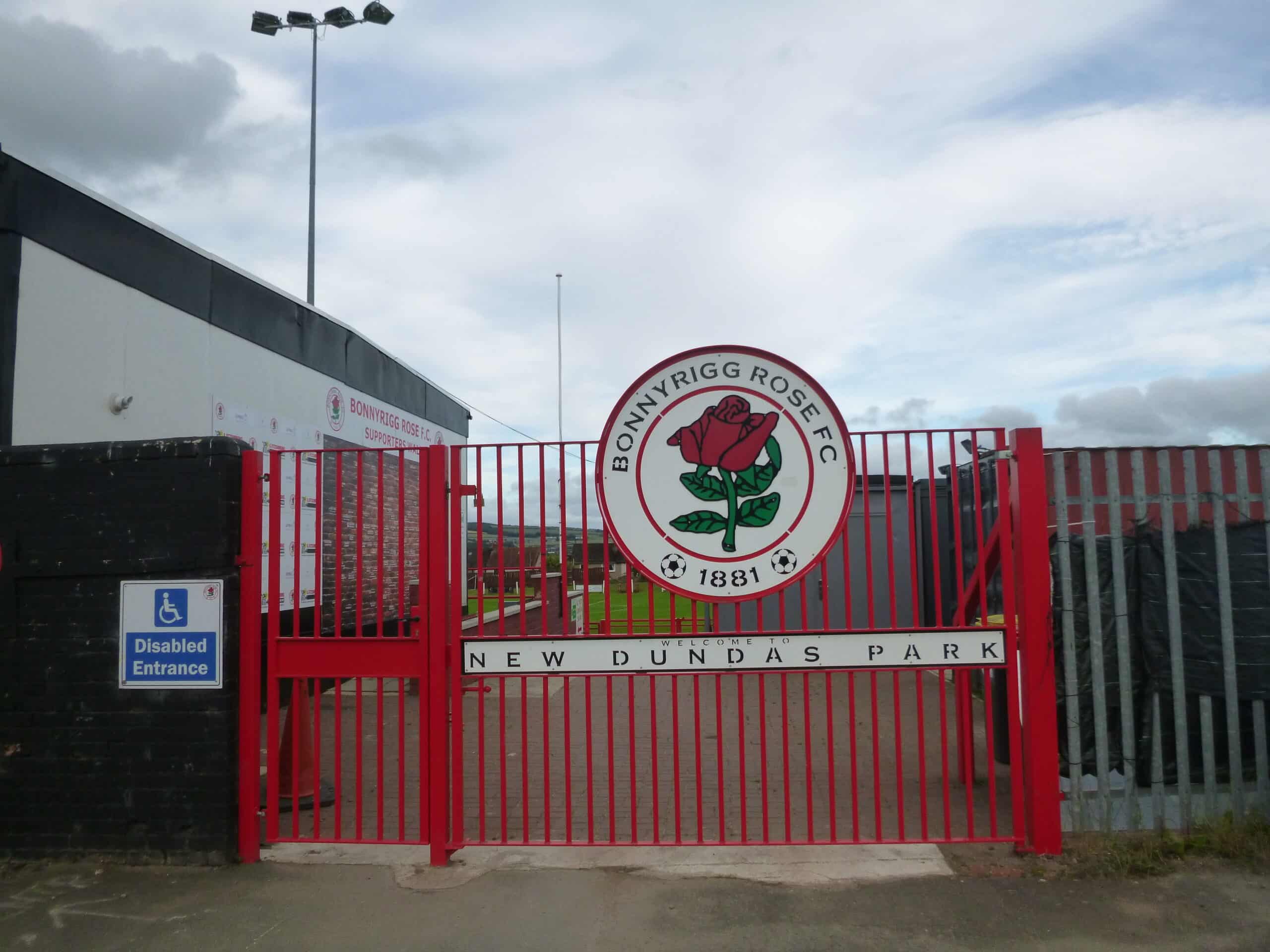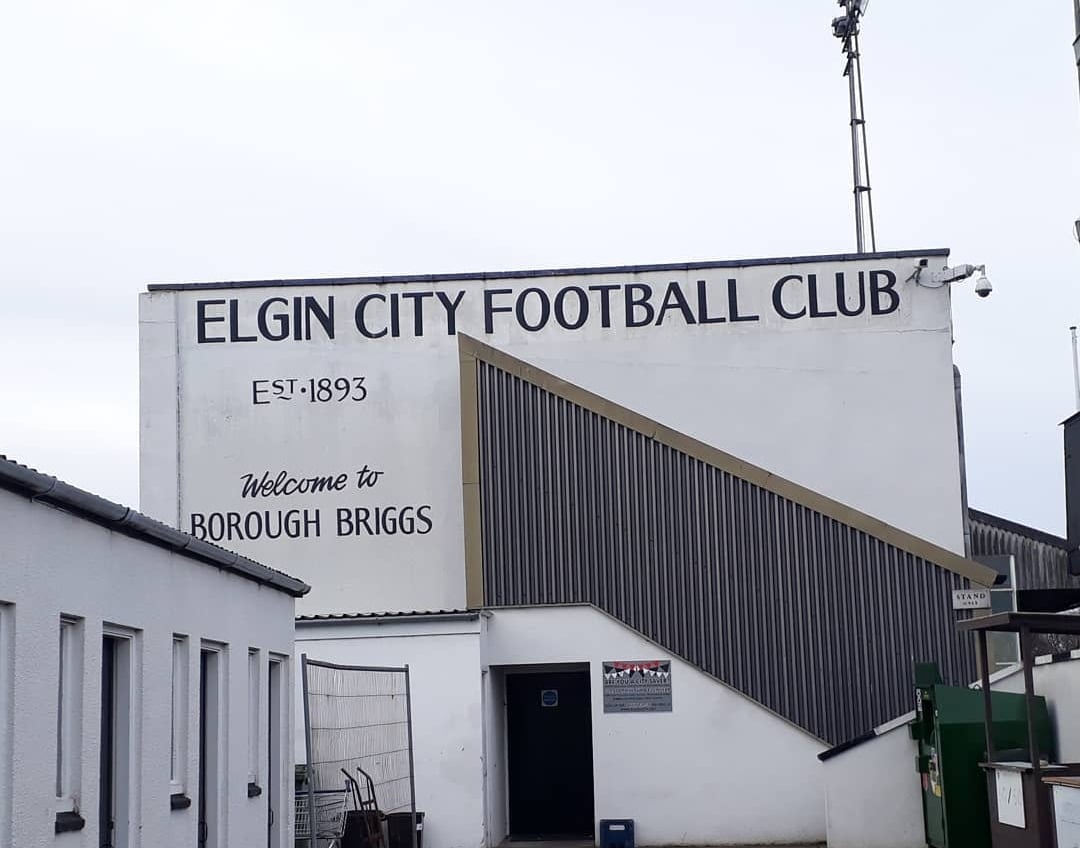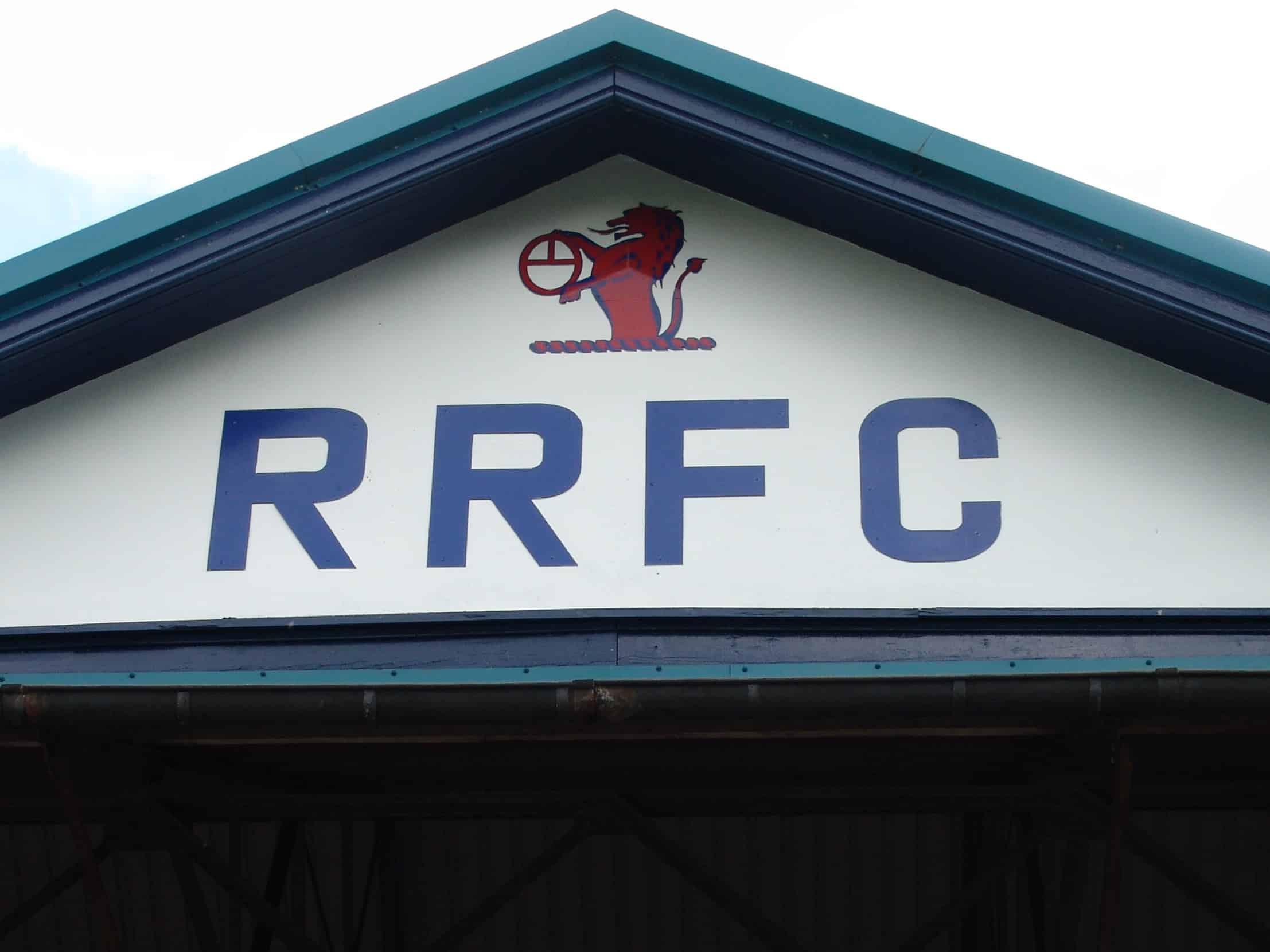A fan’s guide – the club from early doors to today
Forever revered for the iconic record scoreline of 36-0, achieved in a Scottish Cup tie in 1885, Arbroath FC had precious little silverware to show for the 130 years of football that came afterwards – until the memorable title wins of 2017 and 2019.
Two promotions in three seasons not only took the Angus club up to the Championship, but in 2022, Arbroath came within a penalty shoot-out of a play-off final for a place in the Premiership.
Arbroath remains a community club, based at the same edge-of-North-Sea location as the 1885 game of lore, a wind-blasted curio for the football traveller weary of identikit stadiums in out-of-town retail parks.
As opposed to nearest local rivals Montrose, Arbroath competed for several seasons Scotland’s top flight, even as recently as the 1970s. The shrinking of the Premier and second-tier First Division to ten clubs each in 1975 was not the only factor in the decline of the Red Lichties, so named because of the lights that safely guided fishermen’s boats into harbour. The decade also saw the departure of the most influential figure in the club’s history, long-term manager Bert Henderson.



From 1962 until January 1980, this former Dundee half-back, his playing career cut short, led the Lichties to consistent challenges for a spot with the elite in the old First Division. Rarely finishing below third place, and never lower than seventh, in the 20-team lower flight, Henderson’s Arbroath were extremely competitive and often inventive with it.
Pre-Henderson, Arbroath enjoyed their best years around the time of that never-to-be-repeated victory of 1885. Formed in 1878, the Lichties had notched up a number of impressive wins before the fateful arrival of Bon Accord to Gayfield Park.
Regularly tonking teams from Dundee and Aberdeen in the Scottish Cup, Arbroath also beat Rangers 4-3 in 1884 although the game had to be replayed after a post-match protest over the pitch dimensions.
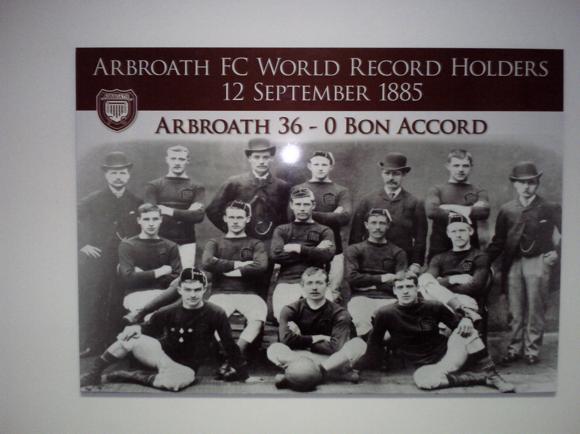
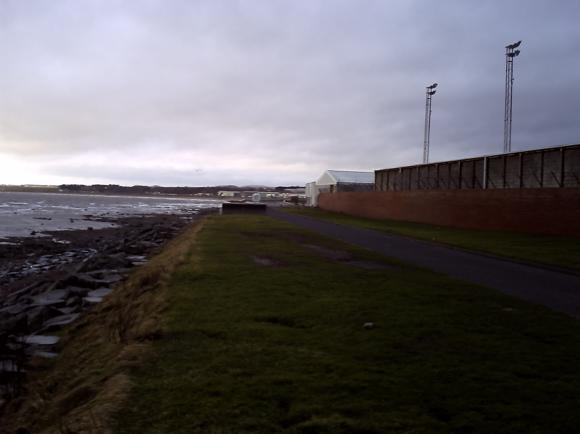
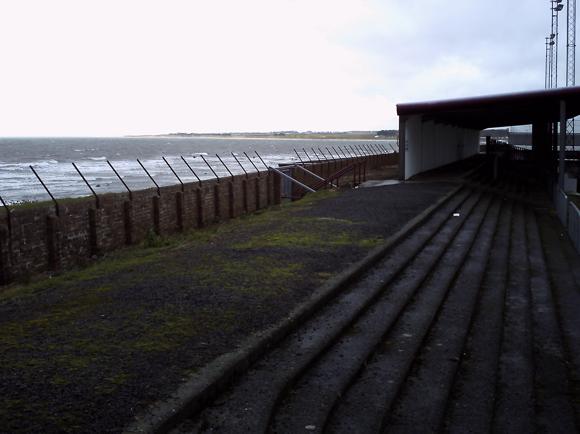
A year later, Bon Accord were the visitors. Scoring goals at a rate of one every 2.5 minutes, Arbroath put 36 past the inexperienced Aberdonians, a young Jocky Petrie notching 13. While the result is obviously unusual, and certainly a world record for senior football that will never be surpassed, it should be noted that the Lichties went on to beat Forfar 9-1 and Dundee East End 7-1 in later rounds – and that several of their players soon earned lucrative professional contacts down south.
Among them, making his Arbroath debut in 1886, was later Scottish international goalkeeper and four-time English league champion with Sunderland, Ned Doig.
The Lichties struggled to replace so much talent, even after being admitted to the Scottish League in 1921.
It took another decade before a quality team emerged once more. Though selling later FA Cup winner George Mutch to Manchester United, and goalkeeper George Cumming to Middlesbrough, Arbroath held their own in the top flight until the start of the war.

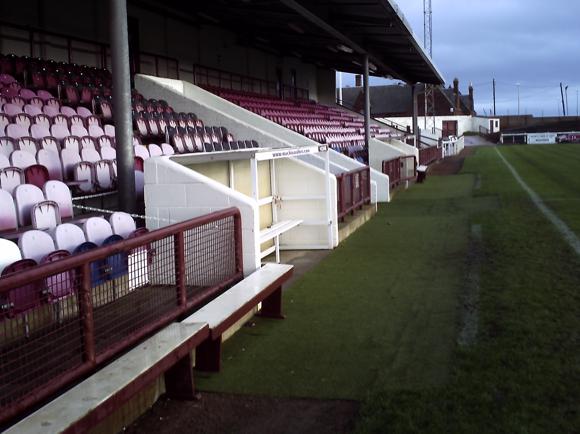
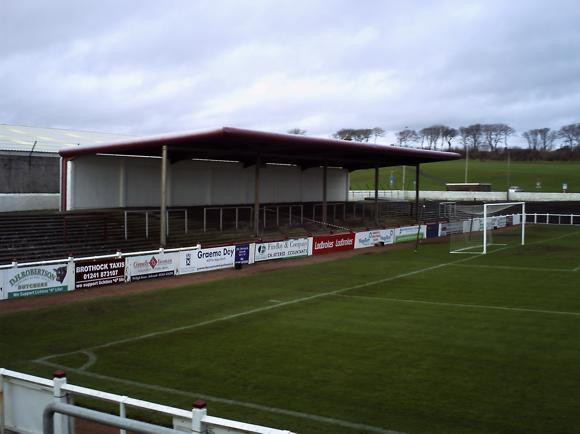
Despite losing First Division status in the post-war league restructure, Arbroath still managed to reach the Scottish Cup semi-final of 1947, losing 2-0 to eventual winners Aberdeen at Dundee.
The side inherited by the incoming Bert Henderson in 1962 had promise. Dave Easson, record-breaking scorer in 1958-59, returned to Gayfield Park, only to suffer a career-ending injury. It took Henderson another couple of seasons to nurture the strike duo of Dennis Bruce and Jimmy Jack as Arbroath claimed promotion to the First in 1968. Jack’s goals helped the Lichties achieve the same feat in 1972, this time for what would be a three-year, and so far final, stint with Scotland’s elite.
A sad, slow demise marked the end of the Henderson era, punctuated by two appearances in the quarter-finals of the Scottish Cup. His 17-year reign was followed by two decades in the wilderness, before former Hibs and Newcastle defender John Brownlie got the Red Lichties back to the second tier in 2001.


A decade later, it was player-manager Paul Sheerin who gained Arbroath another promotion, this time as champions, a first. Goals from Gavin Swankie lifted The Lichties to the Third Division title, fittingly won with victory over Montrose.
The highlight of Sheerin’s four-year managership, though, was the 1-1 draw achieved at Celtic in the Scottish Cup in December 2012 – and desperately unlucky 1-0 defeat in the replay.
With stints at Angus rivals Brechin and Forfar, Dick Campbell seemed to be in for the long haul as manager at Gayfield Park – particularly after having brought in his twin brother Ian as his coaching assistant. While this was unusual, nobody expected what was to come in 2016-17.

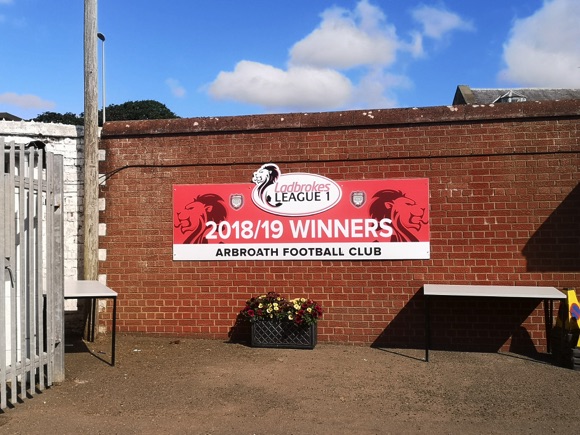

With former Scotland U-19 international Ryan McCord providing and converting the chances, aided and abetted by returning attacking midfielder Steven Doris, Campbell’s Arbroath trailed behind leaders and Angus rivals Forfar in League Two. Way behind, particularly after the Loons took all three points at Gayfield Park.
Through the spring, however, Arbroath came up on the rails, overtook Forfar before the last game of the campaign, a 1-1 draw at Stirling in front a crowd bolstered by 1,000-plus in the away sector. A point shouldn’t have been enough, but Forfar’s shock defeat at home to Annan sent the League Two title to Gayfield Park.
Losing Doris to injury for nearly the whole season, Arbroath still made the Championship play-offs in 2018 but were edged out by Dumbarton. With Doris back, however, and evergreen striker Bobby Linn in prime form, Campbell’s side hit the top spot in League One from the first round of the 2018-19 season, and stayed there.
The defensive cover of Arbroath stalwart Ricky Little proved equally vital in a season marked by a full complement of Angus derbies with Forfar, Montrose and Brechin in the third tier. Average gates at Gayfield Park hovered on four figures.
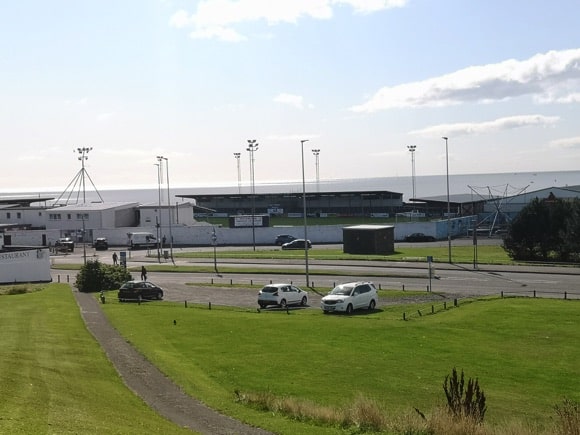

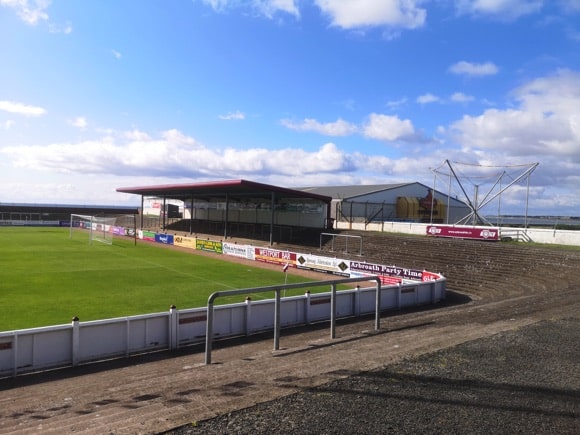
After finding their feet in the second tier, still under Dick Campbell, the Lichties set the league alight in 2021-22, heading the table for three months. Deptford-born, on-loan striker Joel Nouble, the only Cascadian international to appear in Scottish football, earned himself a Player of the Month award as Arbroath surprised the likes of Kilmarnock, Dunfermline and Partick.
Just missing out on the title and a long, long-awaited return to the elite, Arbroath took on Inverness Caley in the Premiership play-off semi-final, holding the Highland side to two goalless draws. A crowd of 5,000-plus witnessed the visitors receive two red cards as the second leg went to penalties. With Thistle up 4-3 in the shoot-out, it was veteran Bobby Linn, hero of the 2018-19 promotion campaign, who had his attempt saved.
Dick Campbell hung on for another season or so but Arbroath had lost all the momentum they had built up since 2016. In December 2023, he was replaced by former Dundee United striker Jim McIntyre but it could be some time before the Lichties hit such heights again.
ground Guide
The field of dreams – and the story behind it



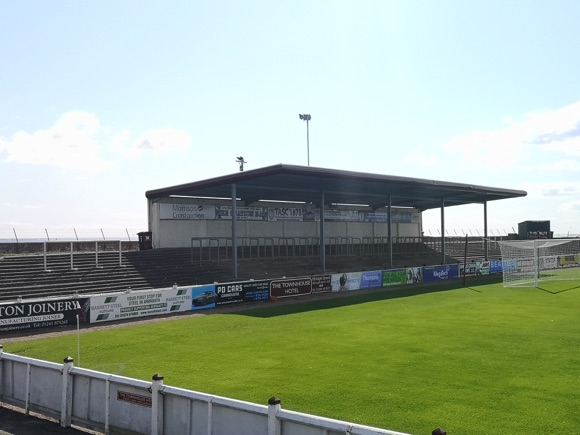

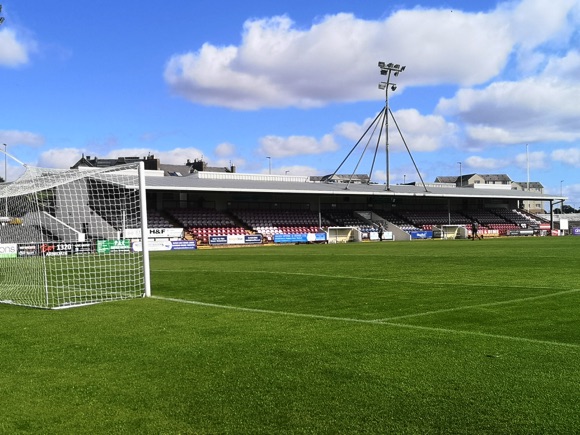

There is no ground like Gayfield Park. So close to the North Sea that waves spray against the East Terrace, it has been the home of Arbroath FC since 1880. It was here that Bon Accord were put to the sword by a record-breaking 36 goals in 1885.
Or rather near here, for that was the old Gayfield, the new one opened in 1925 at a 45-degree angle to its predecessor.
For decades, supporters braved the raging winds that blow in from the beach alongside. In 2002, the main stand was opened, with 800 seats now part of the 4,000 capacity, after being expanded in 2010.
The rest is standing terrace, away fans allocated the Seaforth End, hardy home supporters the Harbour End, but with plenty of criss-crossing at half-time. Each section of terracing has a covering of some sort – you’ll need it if you’re getting battered by the elements on the East Terrace.
getting here
Going to the ground – tips and timings

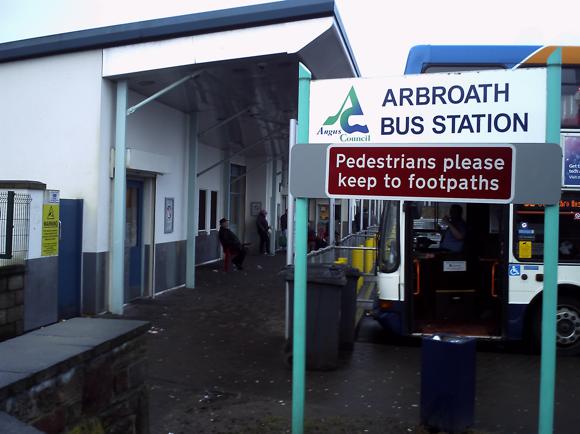

The ground is a 10-15min walk from Arbroath station, turning left past the Westport Bar down to the junction with Millgate Loan near the Anchor Bar, then right and all the way down.
The sat nav code for Gayfield Park is DD11 1QB. There is no parking at the ground but plenty along the seafront, along with free car parks in town, such as the one run by Angus Council at Ladybridge Street/Marketgate (DD11 1AS), a short walk from the ground.
getting in
Buying tickets – when, where, how and how much


Advance tickets are available from the club office (Mon-Fri 10am-4pm, from 10am Sat match day) and online. Availability is rarely an issue. For enquiries, contact 01241 872 157 or ticketing@arbroathfc.co.uk.
A seat in the ColeBrew Main Stand costs £22, discounted at £15 for seniors, students and under-17s. Under-2s are admitted free. A place on the terraces is £20 or £13 discounted.
what to buy
Shirts, kits, merchandise and gifts

Arbroath’s club shop (Mon-Fri 10am-4pm, Sat 10am-2pm) operates from Unit 7 at the Abbeygate Centre (242 High Street), with merchandise and printed team sheets (why don’t other clubs do this?) distributed at Gayfield Park on match days from 2pm-5pm.
Home tops are currently plain maroon with thin darker bands faintly running across. Away is light grey, with chevon-patterned sleeves of maroon and white. Third choice is canary yellow and blue fading into each other across the chest.
Bright and breezy AFC swimming shorts may not provide enough protection for those willing to risk the North Sea, while other merchandise includes captain’s armbands, beach bags and beach towels.
Where to Drink
Pre-match beers for fans and casual visitors
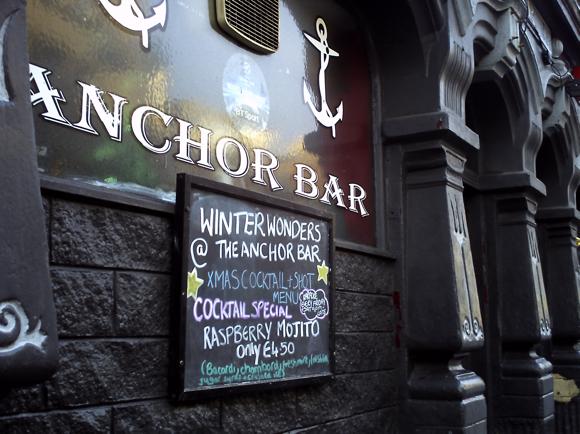
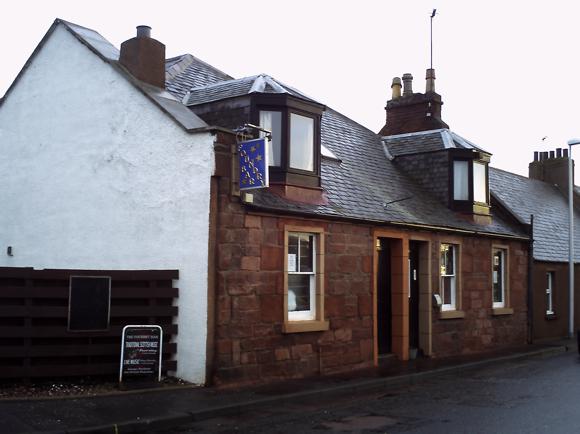

Bars in Arbroath town centre aren’t that far a stroll to the ground but those you’ll pass as you walk down from the station include the small, busy Anchor Bar on Westport, with TV football and plenty of live entertainment later on.
Just off Millgate Loan on East Mary Street, the low-roofed Foundry Bar is a famed music venue so perhaps best visited post-match.
At the bottom of East Mary Street by the harbour, the Old Boatyard is more a seafood restaurant than a bar but its marina-facing terrace just begs you to sit out over a beer should the sun be shining.
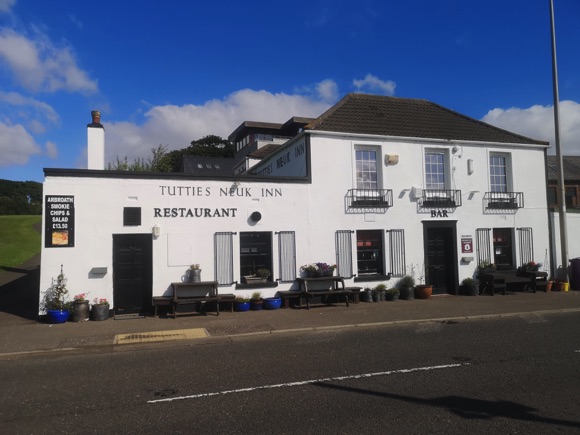

The classic pre-match spot for home and away supporter alike is Tutties Neuk Inn, smack by the ground, serving beer and a full menu (great fish and chips!), its bar given a wee revamp in early 2024.
Within the ground, the 36-0 Lounge has been replaced by the Caird Suite and Champions Lounge for VIP guests, hospitality packages and private functions.










